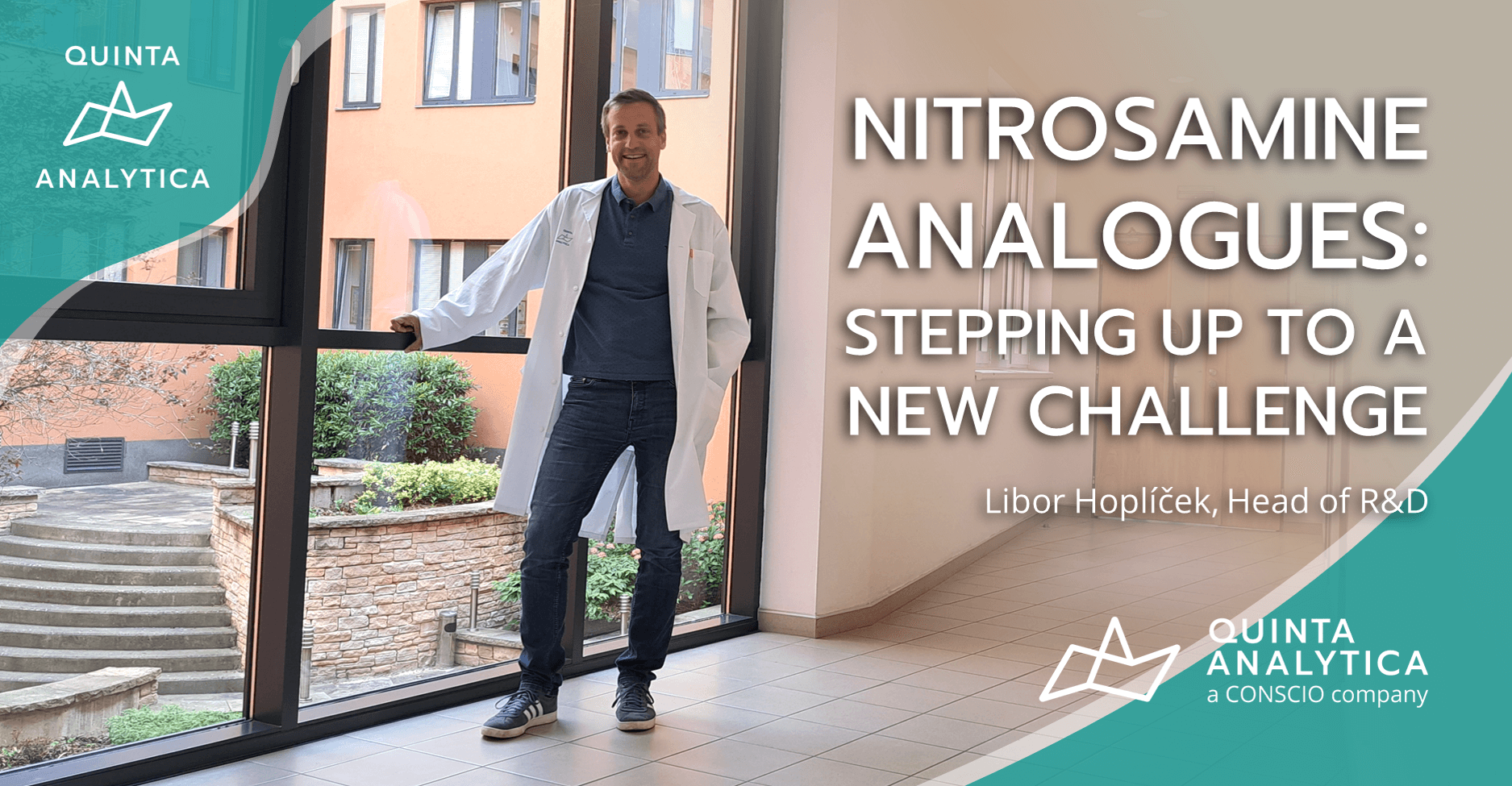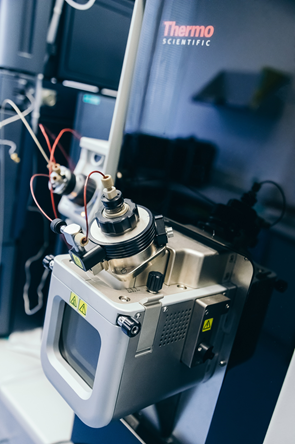
Since 2018, most pharmaceutical companies, drug manufacturers and marketing authorization holders (MAHs) have been assessing the risk of N-Nitrosamine contamination in their active pharmaceutical ingredients (APIs) and drug products. If you belong to any of these groups you probably think you know everything you need about nitrosamine impurities, but we at Quinta have noticed our clients are facing a new and serious challenge that requires everyone’s attention: Nitrosamine analogues.
Mr. Libor Hoplíček, Head of the R&D department at Quinta, has been working on analytical method development, reverse engineering, determination and isolation of unknown impurities since long before nitrosamines became a major concern. His team develops and pre-validates methods for nitrosamine limit test screenings and custom quantifications while other departments perform GMP validations and analysis. As a result, he has first-hand knowledge of the unusual requests Quinta has been receiving lately:
“More and more often we are being contacted about this new type of nitrosamine, the so-called active substance-derived nitrosamines or nitrosamine analogues. As of today, we have been asked to analyze around 10 different analogues by different clients worldwide” Mr. Hoplíček begins. “Some clients have requested rapid limit tests, others GMP-validated quantifications, some come with APIs or substances while others with finished drug products. The problem is that even if a tested API is free of nitrosamine analogues, its related drug product may contain significant, often above-specification, amounts of these impurities. We have seen a few cases where the sponsor thought the confirmatory screening wouldn’t be an issue, to then receive the unpleasant news that limits had been exceeded” Libor Hoplíček states.
Regulatory authorities are aware of the occurrence of nitrosamine analogues and advise all MAHs for EU medicines to prioritize this risk factor in their evaluations and if confirmed, proceed with confirmatory testing. Screening for such analogues, however, is more difficult than for simple N-Nitrosamines. In order to properly understand the challenge, Mr. Hoplíček talks about their origin and molecular nature:
“These nitrosamine analogues are nothing but the original API with some of its amine functional groups replaced by an N-Nitrosamine residue: This is a reaction called nitrosation” Libor Hoplíček explains. “It is unclear which step of the manufacturing process is to be blamed but the general idea is that vulnerable, nitrosatable amine groups in the API react with trace nitrite impurities from excipients or other inactive ingredients. In any case, the final outcome will be an analytical sample with a mixture of the original API and its nitrosamine analogue, the latter sometimes in high amounts. Given the similarities between both, more complex extraction procedures and improvement of the chromatographic steps are needed to properly discriminate the analogue from its API” he defends.

TSQ Quantiva Triple Quad MS
Quinta has a dedicated cross-functional team dedicated to the analysis of nitrosamines, with laboratories in Prague and Brno; state-of-the-art instruments including multiple LC-MS/MS Triple Quads and HS-GC-MS plus three UPLC-MS/Orbitraps for the most stringent analytical conditions; customizable in-house detection methods based on isotopically labeled standards and first-hand experience with 24 different nitrosamines, including analogues. Libor Hoplíček explains how his team’s expertise is essential for handling nitrosamine analogues:
“At the start of the Nitrosamine situation we had to adapt to limits of quantification (LOQs) from 0.03ppm to 0.1ppb, but now analogues demand more than just boosting sensitivity” Mr. Hoplíček begins. “Method setup and system suitability testing (SST) usually take for 1-3 weeks and are more straightforward with conventional nitrosamines since only slight modifications are needed to customize our methods to each matrix. But for nitrosamine analogues we must carefully perfect the chromatography step (choice of column, mobile phases and their gradient) based on the structure of the API. Choice of instrument is also conditioned by the API but also LOQs and matrix effects: Since analogues are larger molecules and give a better mass spec response Triple Quads may be enough, but in case of background noise, smaller peaks or matrix effects, we are also equipped with 3 high-resolution UHPLC/Orbitraps” Libor proclaims.
“In conclusion, API-derived nitrosamines are so similar to the original API that they pose an immediate challenge to precision, selectivity, sensitivity as well as accuracy but in the end, the key to their successful screening and quantification is proper method setup, having the right know-how, experience with multiple nitrosamines and instrumental alternatives to choose from” Mr. Hoplíček says. “Actually, our team is exposed to so many different molecules, projects and clients that this is our greatest strength: Our versatility” he finally sentences.
When asked about some closing words for companies with drug substances or products at a higher risk of formation of nitrosamine analogues, Libor Hoplíček has the following advice:
“We are experiencing an increasing number of nitrosamine analogue requests. If your risk assessment indicates a potential source of conventional nitrosamines the process is more clear-cut: You may opt for rapid preliminary screening to simultaneously test different nitrosamine limits; or else go straight for a GMP quantification for more accurate data. But if you suspect the presence of nitrosamine analogues, then take care to doublecheck all your APIs, finished products and excipients, always aiming for early detection. Remember that even if you have a clean API that it doesn’t mean that your drug product will be clean of analogues. If you identify vulnerable amine groups likely to undergo nitrosation, feel free to contact us and we will be happy to assist you. Otherwise, you could be facing big trouble down the line!”
QUINTA-ANALYTICA is an EMA and FDA-inspected European CRO, part of the Conscio group. For over 25 years Quinta has offered GCP/GLP/GMP-certified clinical, bioanalytical and CMC services for the pharma and biotech sectors. Click the links for more information about Quinta’s nitrosamines services, analytical R&D, pharmaceutical analyses or contact us at sales@quinta.cz.
Article by Albert Pineda




